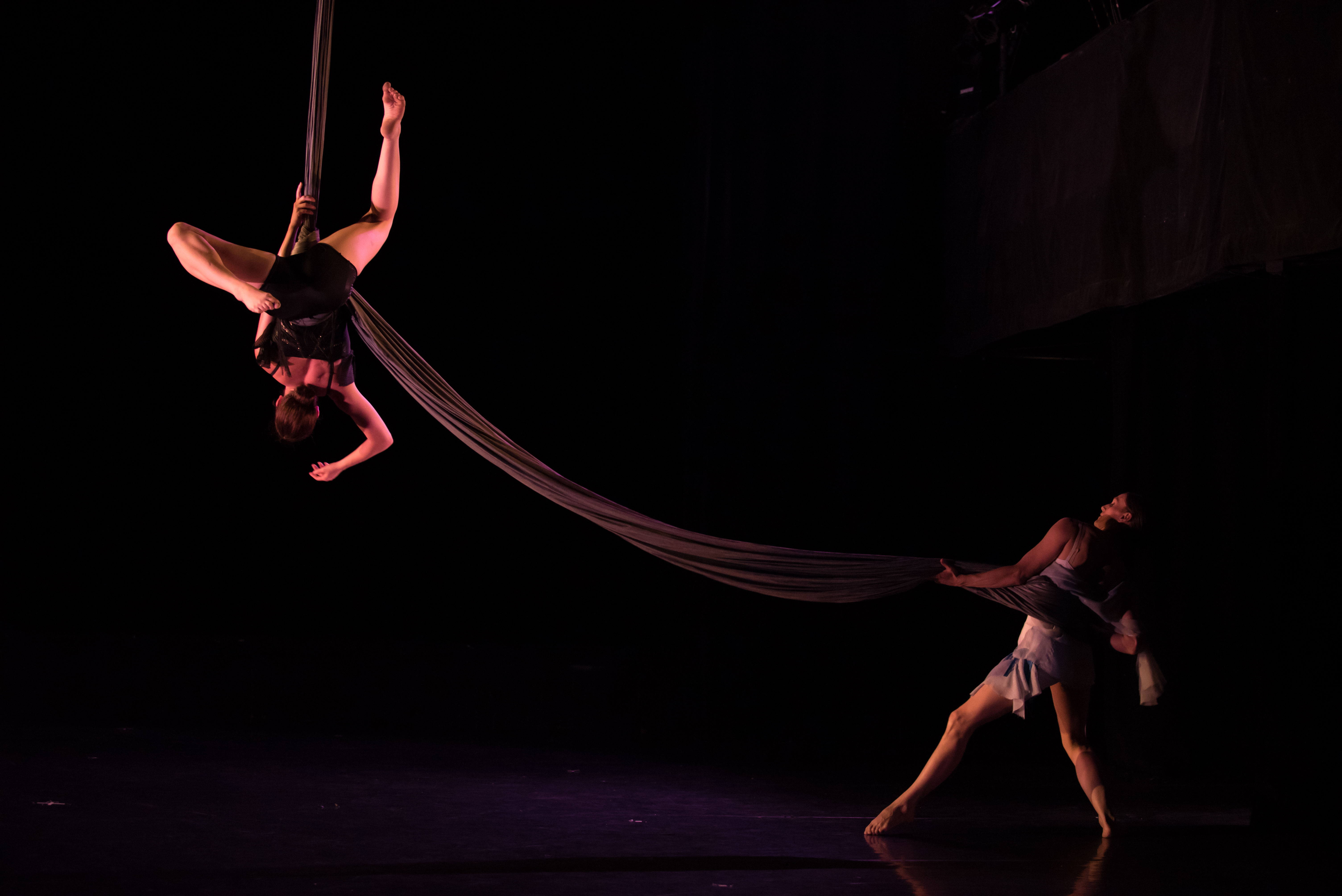ST. LOUIS, MO — It’s not a new trend. Contemporary dance has shared a kinship with minimalistic music for decades. As an undergraduate dance major around the turn of the century, I too was smitten by composers like Arvo Part and Philip Glass — I mean, there’s something intriguing about musical maps which are beholden to process. They’re scores which provide captivating sonic landscapes, but are rarely created with dance in mind. Yet, contemporary dance took a firm grip on the music of Glass, Steve Reich and Max Richter, among others, and simply refuses to let go.
This was rather painfully evident on the second night of Spring to Dance, which despite a wide variety of companies felt unremarkable on the contemporary front. A shame, when you consider the excellent dancing by Karlovsky & Company Dance, the Big Muddy Dance Company, Eisenhower Dance Detroit and even Aerial Dance Chicago, who also flirted with a repetitive drone in an excerpt from their full-length piece Blackbird. Having seen the full work in the studio, I can confidently say that Blackbird successfully builds to a captivating climax, but toward the tail end of this particular evening, this excerpt didn’t pack the punch I know this company is capable of. I say that, of course, only to contradict myself by noting the breathtaking opening image of Hannah Rosenfeld suspended upside-down by two shimmery silks, plus a whirlwind Lyra duet and Chloe Jensen’s thrilling solo.
Speaking of thrilling, American audiences are extremely lucky to have Pennsylvania native Katherine Barkman back in the States, joining Washington Ballet last October after a few years with Ballet Manila. Barkman and partner Rolando Sarabia came second-to-last on the program, with a picture-perfect performance of the Grand Pas Classique — a piece I’d never seen performed live in its entirety until now, most likely because it’s bloody hard.
Created in 1949 by the Russian balletmaster Victor Gsovsky, the Grand Pas Classique is an unforgiving showpiece, demanding for both partners, particularly in its numerous long balances. Sarabia sets his partner on pointe and according to a cue in the music, lets her go, again and again, to perfection. Add to this Sarabia’s stick-the-landing tours en l’air and Barkman’s splendid string of fouettés (with a few turns a la seconde thrown in for good measure), and this piece alone made Spring to Dance worth the price of admission.
That’s not to say it was the only notable performance of the night. Daynelis Munoz and Joseph Gatti’s performance of the first act Pas D’Esclave from Le Corsaire suffered only from a poorly fitting tutu and the fact that, well, an “exotic” tale of slaves and pirates set to an Adolphe Adam score isn’t as cool in 2019. Corsaire‘s variations are nevertheless a cherished part of the classical canon, and the charming Munoz, and Gatti as a buoyant and spirited swashbuckler, admirably tackle this seasoned pas de deux.
Ensemble Espanol Spanish Dance Theater closed the night with high drama, per usual, with their performance of Ron de Jesus’s Mil Clavos. De Jesus created the three-act work in 2014 as a tribute to Ensemble Espanol, whose fearless founder Dame Libby Komaiko died in February. It’s the place where he began his professional career more than three decades ago, though de Jesus is better recognized for his storied history with Hubbard Street Dance Chicago. Mil Clavos is a powerful fusion of Flamenco and contemporary dance, filled to the brim with all the machismo and passionate sensuality one can reliably expect from this company.

Opening the evening in the Lee Theater was the Svastha Dance Company, from Texas, performing a traditional Bharatanatyam trio about Lord Shiva’s bull called Nandi Chol. As Aarthy Sundar, Surya Ravi and Vivek Ramanan stood at center stage, flanking the corners of the space and beautifully oscillating between directional facings, there was, indeed, the feel of a bull in a china shop, with the strong stamping of their footwork balanced by delicate mudras and precise facial expressions.
Also in the Lee, Robert Moses’ Kin and Milwaukee’s Water Street Dance both took on themes related to women. Water Street’s Broken Chord has two side-by-side duets, the company’s women donning frothy white lace gowns and putting themselves wholly at the disposal of their partners. As the music of Chopin softly lulls in the background, the women either flop and fawn, dripping their bodies over and around their men, or function as ambivalent automatons, more than once dragged by their feet or hands. This mostly comes across as dark humor, I think, leaving me more hoping than knowing that the discomfort choreographer Christa Smutek creates is intentional.
By contrast, an excerpt from Robert Moses’s Trapdoors/Cause performed by powerhouse Tiffany Rae Fisher is unequivocally clear. I could have watched Fisher all night, as she embodied the voices of various black women speaking about the micro-agressions they face daily, and the advice they would offer to their daughters to encourage them to live unapologetically happy lives. The magic here is all in the details: the way Fisher shifts her energy to match the timbre of each woman’s voice; the choices she makes about when to project to the audience, and when to fold her performance inward; and the way Moses vacillates between literal gestural references to the words and more abstract realizations of their underlying meaning. In a word, it’s breathtaking.
—
Spring to Dance concludes tonight at the Touhill Performing Arts Center, 1 University Place Dr., St. Louis. Single tickets are $5-$35, available at www.dancestlouis.org.
Header image: Aerial Dance Chicago, photo courtesy of Dance St. Louis
